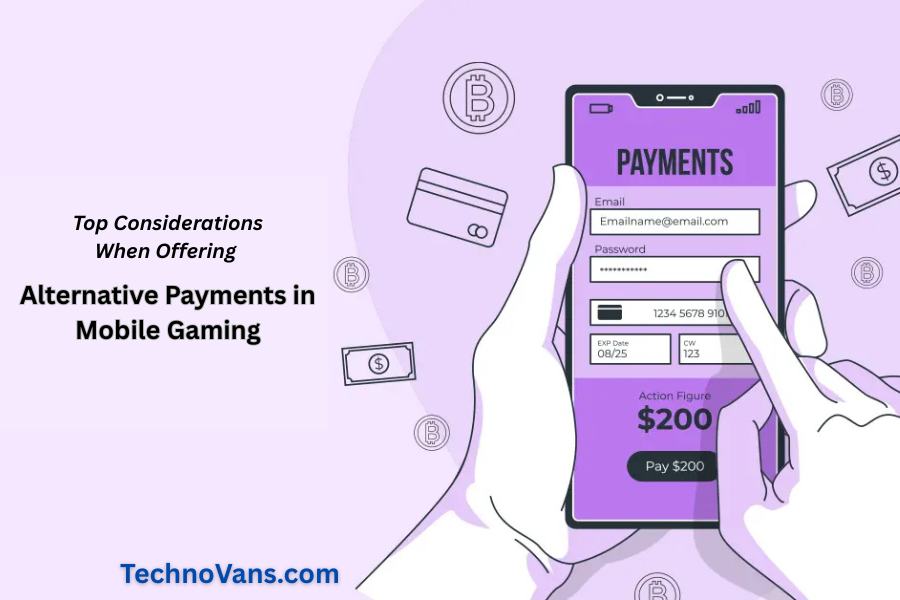Top Considerations When Offering Alternative Payments in Mobile Gaming
Table of Contents:
- The Shift Toward Alternative Payment Methods
- Technology and Infrastructure for Seamless Transactions
- User Experience and Local Preferences
- Security, Compliance, and Fraud Prevention
- Impact of Localization and Language Support
- Regulatory Considerations and Regional Challenges
- Future Trends and Industry Innovations
- Conclusions for a Thriving Mobile Game Economy

The Shift Toward Alternative Payment Methods
The mobile gaming market has evolved rapidly, no longer limited to basic credit card and app store purchases. With billions of players worldwide, the need for alternative payment solutions is clearer than ever. Mobile gamers now expect digital wallets, prepaid cards, carrier billing, and region-specific payment tools to be available for in-app and in-game purchases. The push towards broad payment acceptance helps studios unlock new audiences and creates a smoother purchase experience, especially in emerging markets. Developers interested in offering diverse purchasing options are turning to platforms supporting robust e-commerce infrastructure, such as a customized web shop, for flexibility and convenience.
Meeting these evolving player expectations means adapting to diverse habits, local laws, and fast-changing technology trends. For many gamers, especially in regions where traditional card-based banking is rare, alternative payment options represent the only pathway to fully participating in mobile games. Studios adapting to these needs are well-positioned to increase user loyalty and in-game revenue.
Technology and Infrastructure for Seamless Transactions
Ensuring that seamless alternative payment methods require the right technology stack and strong payment provider partnerships. Mobile games with frictionless checkout experiences outperform peers with lengthy, confusing, or unreliable payment flows. Developers must integrate payment gateways that support local currencies, instant authorizations, and multi-layer security. This complex infrastructure, handled well, is nearly invisible to the user. Investing in backend systems that automatically scale and adapt during high-traffic events, such as in-game festivals or limited-time offers, prevents failed payments and negative player experiences.
User Experience and Local Preferences
Superior user experience in mobile gaming is more than great visuals and tight controls; it extends into the purchase process. Customizing payment flows to reflect local customs makes purchasing feel familiar and secure. In some countries, e-wallets are the preferred method, while SMS or direct carrier billing tops the charts in others. Developers who offer payment options that resonate with local expectations can significantly reduce user drop-off at checkout.
Personalization and transparency also impact conversion rates. Offering the ability to remember preferred payment methods, translating transaction steps, and displaying local pricing all help minimize friction. Subtle touches, such as recommending popular payment types for a player’s region, can make a measurable difference in monetization and retention.
Security, Compliance, and Fraud Prevention
Security is fundamental when managing financial transactions within mobile games. Fraudulent behavior, payment disputes, and unauthorized transactions can quickly erode profit and reputation. Industry leaders deploy advanced anti-fraud tools, end-to-end encryption, and multi-step verification processes to detect suspicious activity without inconveniencing honest players. Compliance with international regulations such as PCI DSS and GDPR is critical for global operations.
As highlighted by insights from GameIndustry.biz, adaptable security measures are required as monetization models diversify. Regularly updating protocols, monitoring analytics for anomalies, and working with trusted payment vendors ensure that security keeps pace with the evolving landscape of alternative payments.
Impact of Localization and Language Support
Localization is more than just translating screens or dialogs—it involves transforming the entire purchase journey to reflect the local language, culture, and etiquette. Providing instructions, error messages, and legal disclaimers in a player’s preferred language removes confusion and increases trust. Properly localized interfaces typically deliver higher conversion rates since users feel understood and supported throughout their purchase.
Beyond language, successful localization means supporting payment systems common to specific regions, adjusting for regional taxes, and even timing promotional offers to coincide with local holidays or paydays. All these factors add to a dramatically improved player experience that drives loyalty and higher lifetime value.
Regulatory Considerations and Regional Challenges
Navigating the regulatory landscape is critical to offering alternative payments in mobile gaming. Global operations often require compliance with overlapping regulations, from data privacy to anti-money laundering (AML) frameworks and ever-changing tax codes. Even within the same country, rules may shift rapidly, so staying agile and informed is crucial.
Some regions explicitly ban certain payment types, impose strict foreign exchange controls, or require transaction storage within national borders. Building systems with compliance in mind allows for faster adaptation when regulations change while helping studios protect intellectual property and customer data across multiple jurisdictions.
Future Trends and Industry Innovations
The future of payments in mobile gaming is marked by innovation, with cryptocurrency, biometric authentication, and instant peer-to-peer transfers making their way to mainstream adoption. Advances in artificial intelligence promise smarter fraud detection and proactive customer support, while open banking technology simplifies cross-border payments. As noted in VentureBeat’s analysis, these tools are increasing both speed and safety—empowering game developers to offer payment flexibility without sacrificing security or control.
The next frontier may see even deeper personalization, with payment experiences molded in real time based on player profile, purchase history, and regional trends. Embracing these innovations early enables gaming companies to future-proof their operations and meet the needs of tomorrow’s global players.
Conclusions for a Thriving Mobile Game Economy
Implementing a diverse, secure, and localized alternative payment strategy is no longer optional for mobile game developers and publishers. The rise of new technologies, evolving global regulations, and fast-changing consumer expectations all demand constant attention. By investing in trusted payment infrastructure and focusing on user-friendly, secure, and localized purchase flows, studios can deliver memorable experiences and boost in-game revenue. Adapting to the rapidly shifting payment landscape isn’t just about removing friction—it’s about building lasting relationships with players worldwide.



